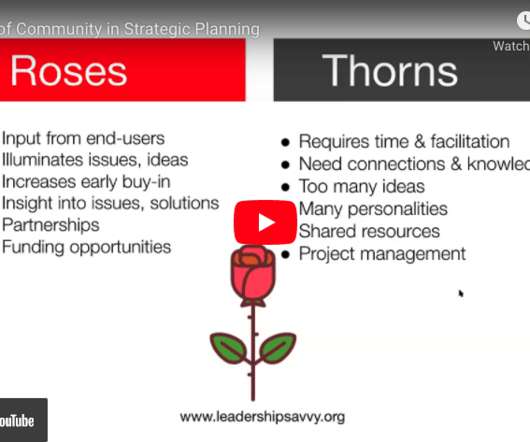Grantmaking: What’s Participation Got to Do with It?
sgEngage
SEPTEMBER 13, 2022
In recent years, that model is being challenged. Lots of grantmakers are intrigued by participatory grantmaking. What matters most in this model are values–and one in particular: equity. Participatory grantmaking invites to decision-making tables people who have historically been excluded. Those at the top decide.





















Let's personalize your content